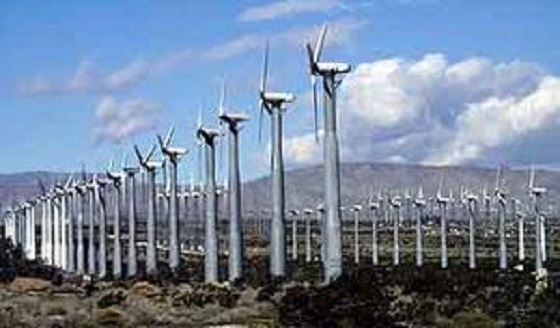COVID-19
“I want to apologize for advocating for the use of masks” – Spread of respiratory illnesses not slowed down by mask use
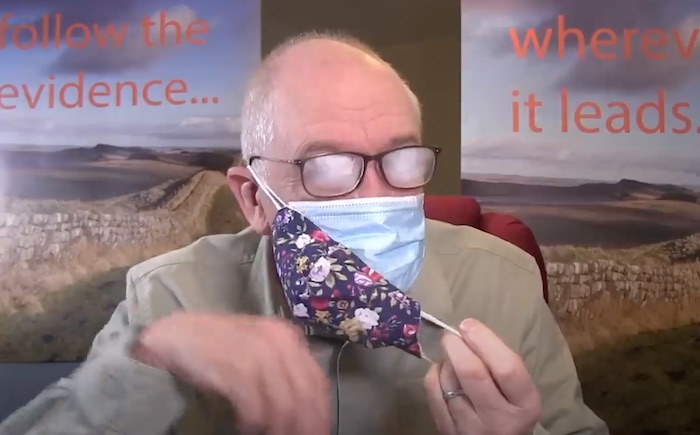
The study examines the effectiveness of masks and of following a hand hygiene program in reducing the likelihood of acquiring respiratory virus infections such as COVID-19.
British Health Researcher Dr. John Campbell shares the disappointing results in this presentation:
From Dr. John Campbell
From the Cochrane Library
What did we do?
We searched for randomised controlled studies that looked at physical measures to stop people acquiring a respiratory virus infection.
We were interested in how many people in the studies caught a respiratory virus infection, and whether the physical measures had any unwanted effects.
What did we find?
We identified 78 relevant studies. They took place in low‐, middle‐, and high‐income countries worldwide: in hospitals, schools, homes, offices, childcare centres, and communities during non‐epidemic influenza periods, the global H1N1 influenza pandemic in 2009, epidemic influenza seasons up to 2016, and during the COVID‐19 pandemic. We identified five ongoing, unpublished studies; two of them evaluate masks in COVID‐19. Five trials were funded by government and pharmaceutical companies, and nine trials were funded by pharmaceutical companies.
We assessed the effects of:
· medical or surgical masks;
· N95/P2 respirators (close‐fitting masks that filter the air breathed in, more commonly used by healthcare workers than the general public); and
· hand hygiene (hand‐washing and using hand sanitiser).
We obtained the following results:
Medical or surgical masks
Ten studies took place in the community, and two studies in healthcare workers. Compared with wearing no mask in the community studies only, wearing a mask may make little to no difference in how many people caught a flu‐like illness/COVID‐like illness (9 studies; 276,917 people); and probably makes little or no difference in how many people have flu/COVID confirmed by a laboratory test (6 studies; 13,919 people). Unwanted effects were rarely reported; discomfort was mentioned.
N95/P2 respirators
Four studies were in healthcare workers, and one small study was in the community. Compared with wearing medical or surgical masks, wearing N95/P2 respirators probably makes little to no difference in how many people have confirmed flu (5 studies; 8407 people); and may make little to no difference in how many people catch a flu‐like illness (5 studies; 8407 people), or respiratory illness (3 studies; 7799 people). Unwanted effects were not well‐reported; discomfort was mentioned.
Hand hygiene
Following a hand hygiene programme may reduce the number of people who catch a respiratory or flu‐like illness, or have confirmed flu, compared with people not following such a programme (19 studies; 71,210 people), although this effect was not confirmed as statistically significant reduction when ILI and laboratory‐confirmed ILI were analysed separately. Few studies measured unwanted effects; skin irritation in people using hand sanitiser was mentioned.
Dr. John Campbells presentation notes with links:
RCTs did not show a clear reduction in respiratory viral infection with the use of medical/surgical masks.
There were no clear differences between the use of medical/surgical masks compared with N95/P2 respirators in healthcare workers, when used in routine care to reduce respiratory viral infection.
Do physical measures such as hand-washing or wearing masks stop or slow down the spread of respiratory viruses?
https://www.cochranelibrary.com/cdsr/…
Evidence published up to October 2022.
Background Influenza (H1N1) caused by the H1N1pdm09 virus in 2009
Severe acute respiratory syndrome (SARS) in 2003 Coronavirus disease 2019 (COVID-19)
Update of a Cochrane Review last published in 2020.
We include results from studies from the current COVID-19 pandemic.
Main results 11 new RCTs and cluster-RCTs n = 610,872
Bringing the total number of RCTs to 78
Medical/surgical masks compared to no masks
Wearing masks in the community probably makes little or no difference to the outcome of influenza‐like illness
wearing a mask may make little to no difference in how many people caught a flu-like illness/COVID-like illness
Risk ratio (RR) 0.95, (0.84 to 1.09) 9 trials, n = 276,917 participants
Moderate-certainty evidence.
Wearing masks in the community probably makes little or no difference to the outcome of laboratory-confirmed influenza/SARS-CoV-2 RR 1.01, (CI 0.72 to 1.42)
6 trials, n = 13,919 Moderate-certainty evidence
Harms were rarely measured and poorly reported (very low-certainty evidence).
N95/P2 respirators compared to medical/surgical masks
We pooled trials comparing N95/P2 respirators with medical/surgical masks
We are very uncertain on the effects of N95/P2 respirators compared with medical/surgical masks on the outcome of clinical respiratory illness
Compared with wearing medical or surgical masks, wearing N95/P2 respirators probably makes little to no difference in how many people have confirmed flu and may make little to no difference in how many people catch a flu-like illness, or respiratory illness.
Confirmed influenza RR 0.70, (0.45 to 1.10) N = 7,779 Very low-certainty evidence
Influenza like illness N95/P2 respirators compared with medical/surgical masks may be effective for ILI RR 0.82 N= 8,407 Low-certainty evidence
The use of a N95/P2 respirators compared to medical/surgical masks
Probably makes little or no difference for laboratory-confirmed influenza infection RR 1.10 N = 8,407 Moderate-certainty evidence
Restricting pooling to healthcare workers made no difference to the overall findings.
Harms were poorly measured and reported
Discomfort wearing medical/surgical masks or N95/P2 respirators was mentioned in several studies
Very low-certainty evidence
One new RCT Medical/surgical masks were non-inferior to N95 respirators N = 1,009 healthcare workers in four countries, providing direct care to COVID-19 patients.
2025 Federal Election
Mark Carney refuses to clarify 2022 remarks accusing the Freedom Convoy of ‘sedition’

From LifeSiteNews
Mark Carney described the Freedom Convoy as an act of ‘sedition’ and advocated for the government to use its power to crush the non-violent protest movement.
Canadian Prime Minister Mark Carney refused to elaborate on comments he made in 2022 referring to the anti-mandate Freedom Convoy protest as an act of “sedition” and advocating for the government to put an end to the movement.
“Well, look, I haven’t been a politician,” Carney said when a reporter in Windsor, Ontario, where a Freedom Convoy-linked border blockade took place in 2022, asked, “What do you say to Canadians who lost trust in the Liberal government back then and do not have trust in you now?”
“I became a politician a little more than two months ago, two and a half months ago,” he said. “I came in because I thought this country needed big change. We needed big change in the economy.”
Carney’s lack of an answer seems to be in stark contrast to the strong opinion he voiced in a February 7, 2022, column published in the Globe & Mail at the time of the convoy titled, “It’s Time To End The Sedition In Ottawa.”
In that piece, Carney wrote that the Freedom Convoy was a movement of “sedition,” adding, “That’s a word I never thought I’d use in Canada. It means incitement of resistance to or insurrection against lawful authority.”
Carney went on to claim in the piece that if “left unchecked” by government authorities, the Freedom Convoy would “achieve” its “goal of undermining our democracy.”
Carney even targeted “[a]nyone sending money to the Convoy,” accusing them of “funding sedition.”
Internal emails from the Royal Canadian Mounted Police (RCMP) eventually showed that his definition of sedition were not in conformity with the definition under Canada’s Criminal Code, which explicitly lists the “use of force” as a necessary aspect of sedition.
“The key bit is ‘use of force,’” one RCMP officer noted in the emails. “I’m all about a resolution to this and a forceful one with us victorious but, from the facts on the ground, I don’t know we’re there except in a small number of cases.”
Another officer replied with, “Agreed,” adding that “It would be a stretch to say the trucks barricading the streets and the air horns blaring at whatever decibels for however many days constitute the ‘use of force.’”
The reality is that the Freedom Convoy was a peaceful event of public protest against COVID mandates, and not one protestor was charged with sedition. However, the Liberal government, then under Justin Trudeau, did take an approach similar to the one advocated for by Carney, invoking the Emergencies Act to clear-out protesters. Since then, a federal judge has ruled that such action was “not justified.”
Despite this, the two most prominent leaders of the Freedom Convoy, Tamara Lich and Chris Barber, still face a possible 10-year prison sentence for their role in the non-violent assembly. LifeSiteNews has reported extensively on their trial.
COVID-19
17-year-old died after taking COVID shot, but Ontario judge denies his family’s liability claim
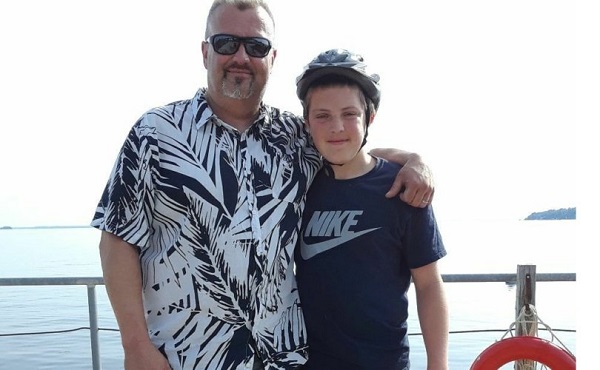
From LifeSiteNews
Ontario Superior Court Justice Sandra Antoniani ruled that the Department of Health had no ‘duty of care’ to individual members of the public in its pandemic response.
An Ontario judge dismissed a liability claim from a family of a high schooler who died weeks after taking the COVID shot.
According to a published report on March 26 by Blacklock’s Reporter, Ontario Superior Court Justice Sandra Antoniani ruled that the Department of Health had no “duty of care” to a Canadian teenager who died after receiving a COVID vaccine.
“The plaintiff’s tragedy is real, but there is no private law duty of care made out,” Antoniani said.
“There is no private law duty of care to individual members of the public injured by government core policy decisions in the handling of health emergencies which impact the general population,” she continued.
In September 2021, 17-year-old Sean Hartman of Beeton, Ontario, passed away just three weeks after receiving a Pfizer-BioNtech COVID shot.
After his death, his family questioned if health officials had warned Canadians “that a possible side effect of receiving a Covid-19 vaccine was death.” The family took this petition to court but has been denied a hearing.
Antoniani alleged that “the defendants’ actions were aimed at mitigating the health impact of a global pandemic on the Canadian public. The defendants deemed that urgent action was necessary.”
“Imposition of a private duty of care would have a negative impact on the ability of the defendants to prioritize the interests of the entire public, with the distraction of fear over the possibility of harm to individual members of the public, and the risk of litigation and unlimited liability,” she ruled.
As LifeSiteNews previously reported, Dan Hartman, Sean’s father, filed a $35.6 million lawsuit against Pfizer after his son’s death.
Hartman’s family is not alone in their pursuit of justice after being injured by the COVID shot. Canada’s Vaccine Injury Support Program (VISP) was launched in December 2020 after the Canadian government gave vaccine makers a shield from liability regarding COVID-19 jab-related injuries.
However, only 103 claims of 1,859 have been approved to date, “where it has been determined by the Medical Review Board that there is a probable link between the injury and the vaccine, and that the injury is serious and permanent.”
Thus far, VISP has paid over $6 million to those injured by COVID injections, with some 2,000 claims remaining to be settled.
According to studies, post-vaccination heart conditions such as myocarditis are well documented in those, especially young males who have received the Pfizer jab.
Additionally, a recent study done by researchers with Canada-based Correlation Research in the Public Interest showed that 17 countries have found a “definite causal link” between peaks in all-cause mortality and the fast rollouts of the COVID shots as well as boosters.
-

 2025 Federal Election1 day ago
2025 Federal Election1 day agoJoe Tay Says He Contacted RCMP for Protection, Demands Carney Fire MP Over “Bounty” Remark
-

 2025 Federal Election2 days ago
2025 Federal Election2 days agoHong Kong-Canadian Groups Demand PM Carney Drop Liberal Candidate Over “Bounty” Remark Supporting CCP Repression
-
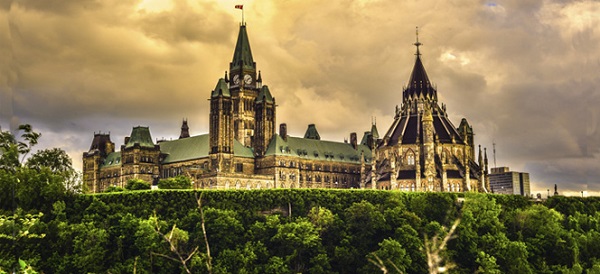
 2025 Federal Election1 day ago
2025 Federal Election1 day agoAlcohol tax and MP pay hike tomorrow (April 1)
-

 2025 Federal Election1 day ago
2025 Federal Election1 day agoPoilievre To Create ‘Canada First’ National Energy Corridor
-
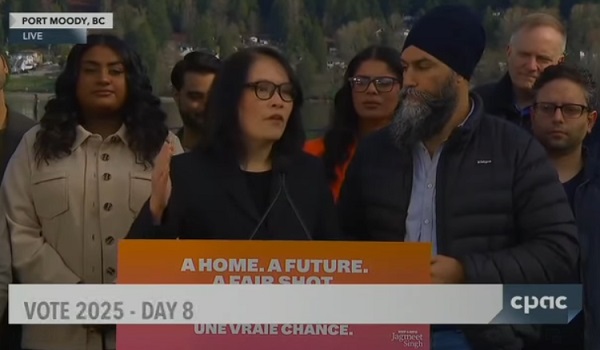
 2025 Federal Election2 days ago
2025 Federal Election2 days agoChinese Election Interference – NDP reaction to bounty on Conservative candidate
-
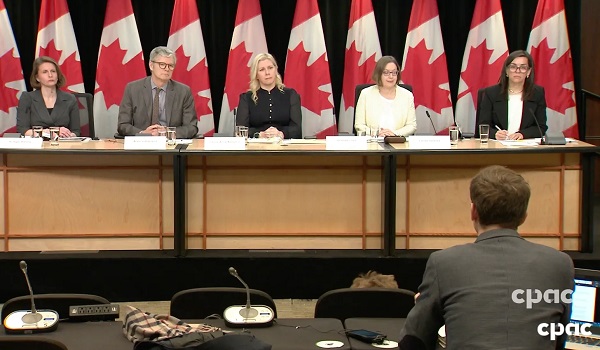
 2025 Federal Election1 day ago
2025 Federal Election1 day agoChina Election Interference – Parties Received Security Briefing Days Ago as SITE Monitors Threats to Conservative Candidate Joe Tay
-

 2025 Federal Election1 day ago
2025 Federal Election1 day agoFixing Canada’s immigration system should be next government’s top priority
-

 Bruce Dowbiggin1 day ago
Bruce Dowbiggin1 day agoAre the Jays Signing Or Declining? Only Vladdy & Bo Know For Sure
